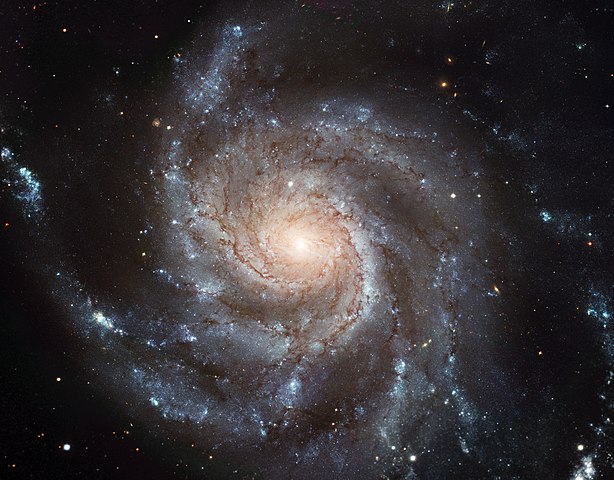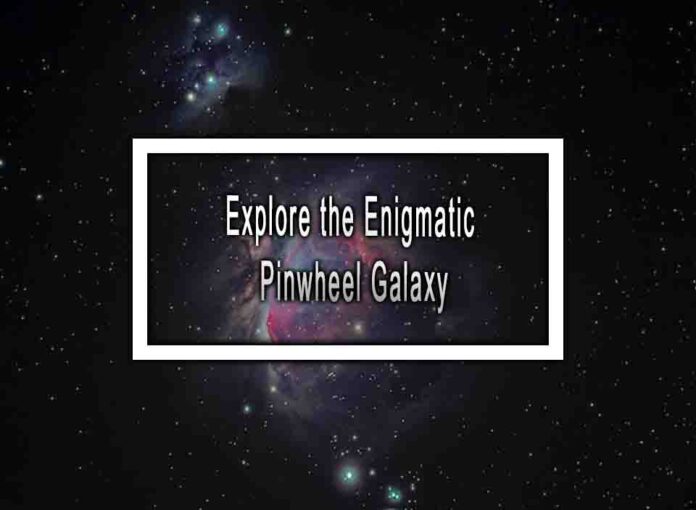The Pinwheel Galaxy, also known as Messier 101 (M101) or NGC 5457, is a captivating and enigmatic spiral galaxy located in the constellation Ursa Major. It is one of the most famous and beautiful spiral galaxies in the night sky, and it has intrigued astronomers and space enthusiasts for centuries. Here, we explore the enigmatic qualities and key features of the Pinwheel Galaxy:
Spiral Structure:
The Pinwheel Galaxy is renowned for its stunning spiral arms, which are intricately detailed and adorned with regions of star formation, gas, and dust. Its spiral structure is a defining characteristic that makes it a popular target for amateur astronomers and astrophotographers.
Large and Luminous:
M101 is a large galaxy, spanning approximately 170,000 light-years in diameter, making it nearly twice the size of our Milky Way galaxy. It is also quite luminous, containing billions of stars.
Complex Structure:
This galaxy has a complex and irregular structure in its spiral arms, including numerous knots and clusters of young, hot stars, as well as dark dust lanes. These features are a testament to its dynamic and active nature.
Star Formation:
The Pinwheel Galaxy is a site of active star formation. Within its spiral arms, massive, bright blue stars are born from the surrounding gas and dust clouds. These regions are often referred to as “HII regions” due to the presence of ionized hydrogen.
Supernovae:
The Pinwheel Galaxy has been the host of several observed supernovae, which are powerful explosions marking the end of a massive star’s life. These events contribute to the ever-changing and dynamic nature of the galaxy.
Dust Lanes:
Prominent dark dust lanes can be seen winding through the spiral arms. These lanes are composed of gas and dust particles that obscure the light from stars behind them. They are often associated with regions of intense star formation.
Galactic Interaction:
M101 is part of a small galaxy group that includes several nearby companions. The gravitational interactions between these galaxies can influence their structure and evolution.
Distance Measurement:
Determining the precise distance to the Pinwheel Galaxy has been a challenge, but it is estimated to be around 21 million light-years away from Earth.
Enigmatic Evolution:
The Pinwheel Galaxy’s evolution remains a topic of active research. Astronomers study its properties, stellar populations, and interactions with neighboring galaxies to gain insights into how spiral galaxies like the Milky Way evolve over cosmic time.
Visual Appeal:
Beyond its scientific significance, the Pinwheel Galaxy is a source of wonder and inspiration for skywatchers around the world. Its striking appearance and intricate details make it a favorite target for both amateur and professional astronomers.
Studying the Pinwheel Galaxy offers valuable insights into the dynamics and processes that shape spiral galaxies in the universe. Its enigmatic nature and breathtaking beauty make it a celestial wonder worth exploring and admiring through telescopes and deep-space imaging.










